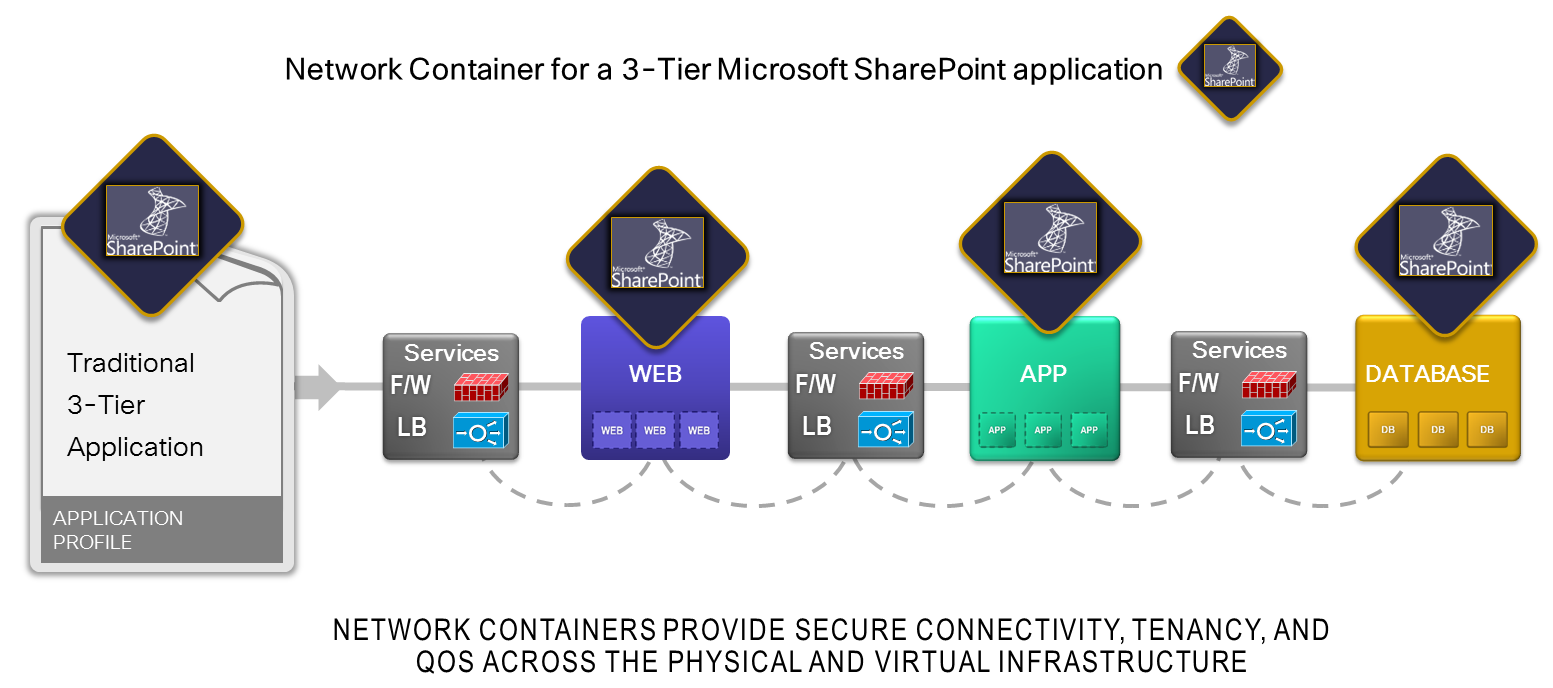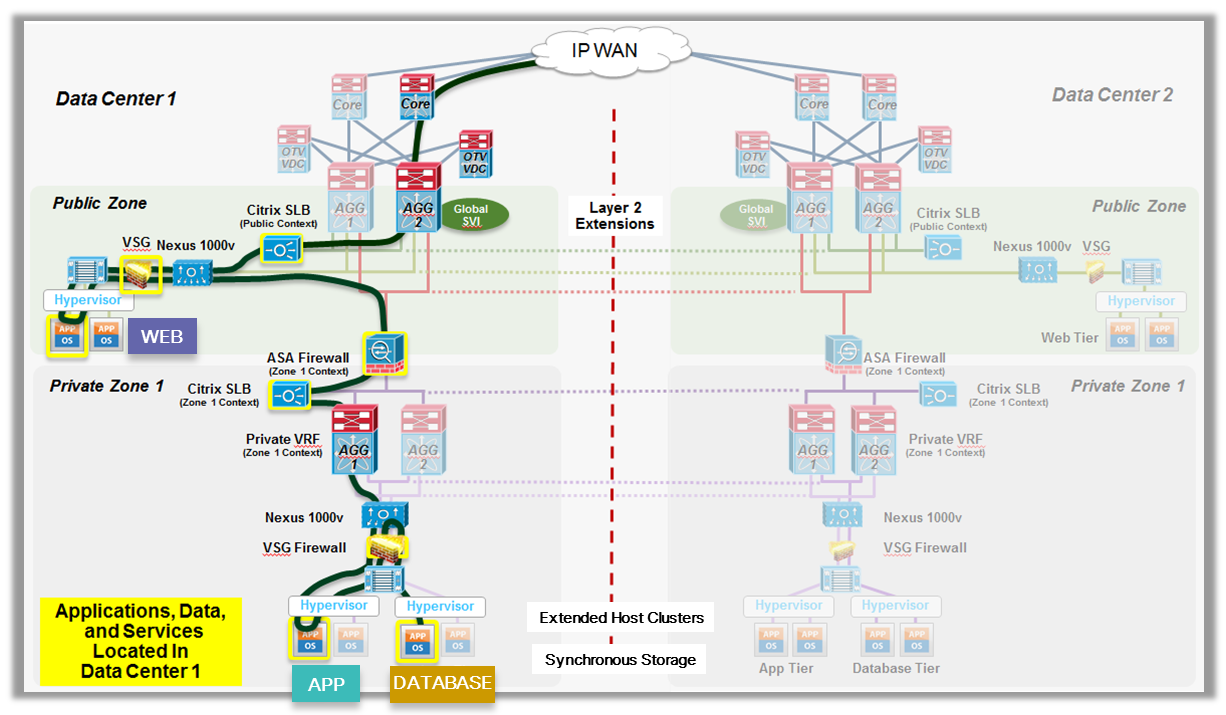































What is Next-Gen Workload Mobility for the Private Cloud?
Enterprises across the globe have been asking for simpler ways to provide multi-site Business Continuity and Workload Mobility for applications hosted in their Private Cloud. The Cloud promises a more agile operational environment and that promise has been fulfilled to a large extent within their data centers. But many Enterprises are challenged to unlock this same agility across multi-site Cloud topologies. For example, Enterprise CTOs and CIOs have asked us directly to provide simplified Workload Mobility of critical apps between sites to give their operations teams more flexibility.
Many competitive solutions offer basic VM mobility between sites and storage replication, butdo notaddress the rest of the application environment including: security, stateful services, network containers, tenancy, and most importantly both physical and virtual resources.
What good does it do to move a VM to a new site if the rest of the application environment is left behind causing a potential security hole?
This blogs directly addresses multi-site Workload Mobility and provides some compelling test results from our new Business Continuity and Workload Mobility Solution for Private Cloud.
How to move a LIVE 3-tier app like Microsoft SharePoint to a new site (without impacting users)
As we all know, business critical applications require a robust service environment to operate securely across the cloud. In our example below, the application environment provides firewall and load balancing services for each tier of the SharePoint application; web, app, and database tiers. These services are stitched together using a secure Network Container that carve out a slice of resources across the data center for SharePoint. Most Enterprises and SPs use a mix of physical and virtual resources including firewalls, load balancers, VPN termination, IDS, and network switching. Many of these services create stateful connections to users, so....
Broken user connections = Service disruption (that's not good)
Broken Network Services = Potential Security hole (that's even worse)

How does Next-Gen Workload Mobility actually work?
Let's share some test results from our newBusiness Continuity and Workload Mobility Solutionto illustrate how we performed live SharePoint migrations to a new site (75 km away) while maintaining security, stateful services, and user connections. Oh yes, automatically without manual intervention.
Baseline topology for Microsoft SharePoint deployed in our Private Cloud
We first deployed the SharePoint Web, App, and Database tiers in a secure network container in Data Center 1 using service orchestration, simple and easy. Refer to the figure below for a topology picture.
SharePoint is up and running in Data Center 1, supporting hundreds of users with secure connections. Now let's move SharePoint to a new site without the users knowing it.

Step 1: Perform Live SharePoint Migration to Data Center 2....while maintaining secure user connections!
We performed a Live vMotion of SharePoint (Web, App, Database) to new hosts in Data Center 2, described in the figure below. Data Center 2 is 75 km away.Our SharePoint migration had minimal disruption (2 seconds or less) and maintained security, stateful services, and all user connections across our multi-site Cloud. Pretty sweet! A few highlights from our validated design are provided below.
Now let's move the rest of the network container to Data Center 2 in less than one second!

Step 2: Redirect users to a new Network Container in Data Center 2....in less than 1 second!
With the aid of service orchestration, we simply created a new network container in Data Center 2. This new container included the same configuration, connections, and services (firewalls, load balancers) as the original container in Data Center 1. Once created, we simply redirected external users to the SharePoint application running in Data Center 2, as described below. The redirection of users happened in less than one second, pretty amazing.A simple routing update delivered through service orchestration performed the redirection. In this step, user connections were broken and new connections were re-established to the already running SharePoint application in less than one second! A few highlights from our validated design are provided below.

For More Info:
We encourage you to follow my blog series and check out our new business continuity and workload mobility solution (VMDC DCI), which describes key business drivers, Cisco DCI innovations, and validated designs that our customers are deploying in their private clouds.
Deploy with confidence! (and sleep better knowing your Cloud is more reliable and secure)
In the same blog series:
- Business Continuity and Workload Mobility for Private Cloud (CVD-Part 1)
- Business Continuity and Workload Mobility for Private Cloud (CVD-Part 2)
- Business Continuity and Workload Mobility for Private Cloud (CVD Part 3)
 Tags quentes :
Computação em nuvem
#Nuvem
Cisco Validated Design (CVD)
Segurança de aplicativos
business continuity
Data Center Interconnect
application virtualization
Network Services
cloud data center
Tags quentes :
Computação em nuvem
#Nuvem
Cisco Validated Design (CVD)
Segurança de aplicativos
business continuity
Data Center Interconnect
application virtualization
Network Services
cloud data center